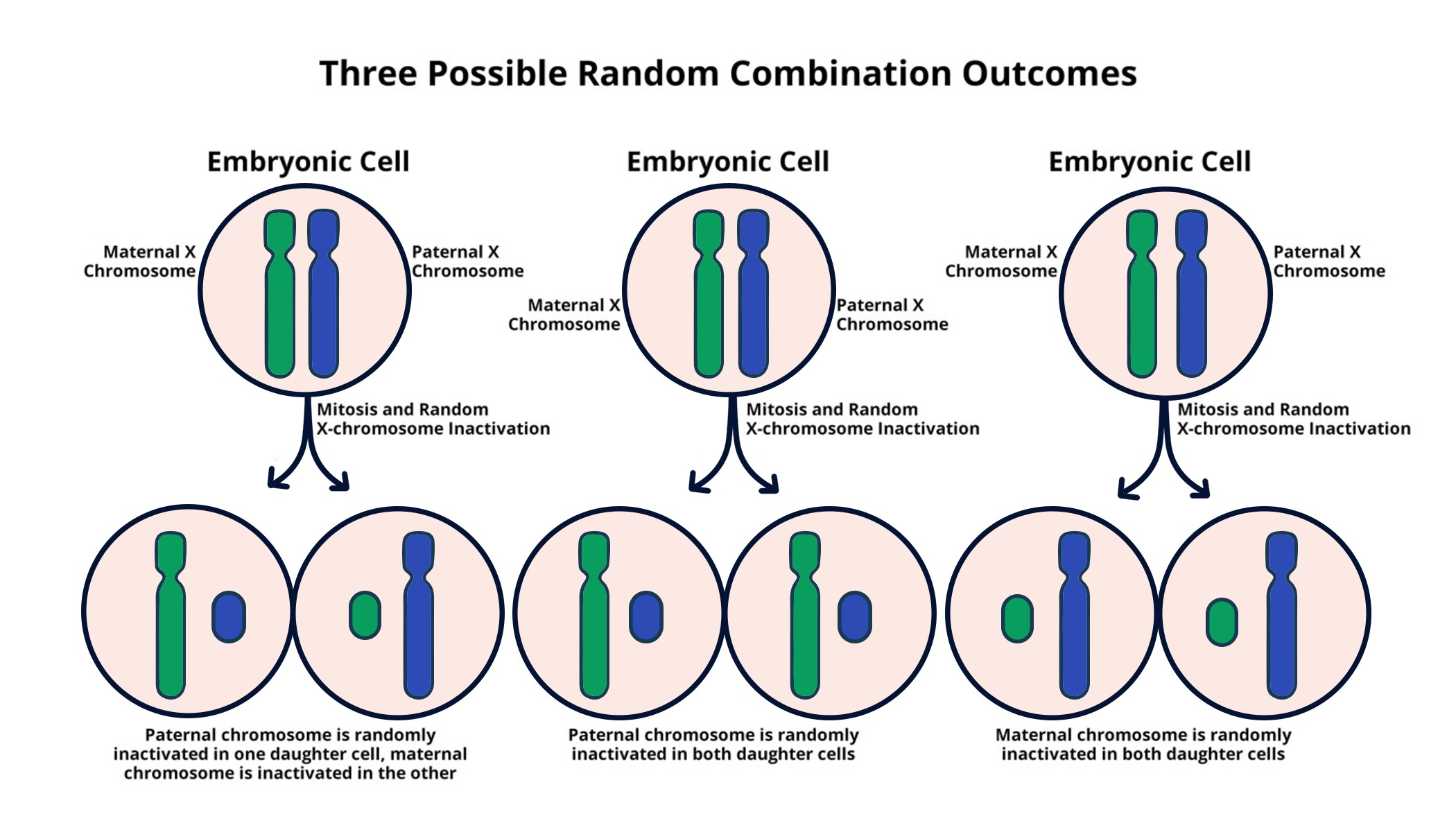
X Chromosome Therapy: Potential Breakthroughs for Genetic Disorders
X chromosome therapy represents a promising frontier in the battle against genetic diseases, particularly those linked to the X chromosome such as Fragile X syndrome and Rett syndrome. This innovative therapeutic approach seeks to address the complexities surrounding X chromosome inactivation, a process crucial for maintaining genetic balance in cells. Researchers, including experts like Jeannie T. Lee, are uncovering the mechanisms of chromosomal silencing, shedding light on potential cellular therapies that could restore function in affected individuals. By targeting the inactivated X chromosome, scientists aim to unlock the potential of healthy gene variants trapped within, offering hope to thousands impacted by these debilitating conditions. As studies progress, X chromosome therapy could revolutionize treatment options, paving the way for effective interventions in hereditary genetic disorders linked to this vital chromosome.
Referred to as X-linked gene therapy, this novel approach seeks to mitigate the effects of hereditary conditions associated with the X chromosome. Targeting the intricate process of X chromosome inactivation, researchers aim to devise strategies that could reactivate dormant healthy genes silenced due to genetic mutations. Disorders such as fragile X and Rett syndrome, characterized by their connection to abnormalities on the X chromosome, stand to benefit significantly from advancements in this field. Cutting-edge cellular therapies are being developed to address and potentially reverse the impacts of these genetic conditions, providing a beacon of hope for affected individuals. Understanding and manipulating the mechanisms behind X chromosome behavior opens new avenues in genetics and therapeutics, promising broader implications for treating various genetic diseases.
Understanding X Chromosome Inactivation
X chromosome inactivation (XCI) is a crucial process that occurs in females, serving as a natural balancing act for gene dosage between the sexes. It ensures that females, who possess two X chromosomes, do not express double the amount of X-linked genes compared to males who have only one. This inactivation process is mediated by a RNA molecule called Xist, which plays a pivotal role in silencing one of the X chromosomes. As this process unfolds, it essentially alters the properties of the chromatin, akin to the properties of gel-based substances that envelop the chromosomes, allowing a selective closure of gene expression.
The implications of understanding X chromosome inactivation extend far beyond basic biology; it opens the door to unraveling potential therapies for genetic diseases linked to the X chromosome. For instance, the ability to comprehend how Xist modifies chromatin architecture can lead to strategies that may reactivate silenced genes. This knowledge is vital for developing targeted therapies for conditions such as Fragile X syndrome and Rett syndrome, where mutations on the X chromosome are detrimental, and may pave the way for novel cellular therapies that restore normal function.
Impacts of X Chromosome Therapy on Fragile X Syndrome
Fragile X syndrome, a genetic condition resulting from mutations on the X chromosome, primarily affects males and leads to intellectual disabilities and developmental delays. Recent research, particularly from Jeannie T. Lee’s laboratory, indicates that employing X chromosome therapy could provide significant therapeutic benefits. By utilizing approaches that unsilence the inactive X chromosome, researchers are aiming to restore the function of the healthy gene variant located on this chromosome. Given the nature of X-linked disorders, this method holds promise not only for females but also for affected males, suggesting a broader therapeutic impact for this innovative work.
The mechanics of X chromosome therapy revolve around the targeted delivery of compounds that can penetrate cellular barriers and modify RNA silencing mechanisms. By carefully orchestrating the interaction between modified RNA and the surrounding gel-like chromatin, it may be possible to switch back on the functions of otherwise silent genes. This therapeutic strategy would be a breakthrough for patients suffering from Fragile X syndrome, potentially ameliorating symptoms and improving quality of life as clinical trials progress.
Frequently Asked Questions
What is X chromosome therapy and how can it help with genetic diseases?
X chromosome therapy refers to innovative treatments aimed at addressing genetic diseases caused by mutations on the X chromosome. By understanding the mechanisms of X-inactivation, researchers are developing methods to unsilence the inactive X chromosome, potentially restoring function to genes affected by disorders such as Fragile X syndrome and Rett syndrome.
How does X chromosome inactivation affect female patients with genetic disorders?
In females, the presence of two X chromosomes means that one can be inactivated, which complicates the treatment of genetic disorders linked to this chromosome. X chromosome inactivation creates a challenge in utilizing the healthy copies of genes trapped in the inactive X. By utilizing X chromosome therapy, researchers aim to reactivate these genes, providing potential relief from such genetic disorders.
What are the implications of X chromosome therapy for Fragile X syndrome and Rett syndrome?
X chromosome therapy has great implications for patients with Fragile X syndrome and Rett syndrome as it aims to unsilence the mutated genes by reactivating the healthy versions located on the inactivated X chromosome. This therapy could lead to significant improvements and possibly a cure for these neurodevelopmental disorders.
What is the role of Xist in X chromosome therapy?
Xist is an essential RNA molecule involved in X chromosome inactivation. In the context of X chromosome therapy, manipulating Xist’s activity can help in unsilencing the inactive X chromosome, allowing access to healthy genes that were previously silenced, which may lead to cures for various genetic diseases.
What future developments are expected in X chromosome therapy?
Future developments in X chromosome therapy include optimizing techniques for unsilencing X-linked genes and conducting safety studies. The ultimate goal is to move these innovative therapy methods into clinical trials within the coming years, potentially leading to new treatment avenues for genetic diseases linked to the X chromosome.
| Key Aspect | Details |
|---|---|
| X Chromosome Structure | Females have two X chromosomes, while males have only one, leading to challenges in gene expression. |
| X Inactivation Mechanism | X chromosome inactivation is essential for equalizing gene expression between sexes, involving a substance called Xist that modifies surrounding chromatin. |
| Research Significance | Findings from Jeannie Lee’s lab could lead to therapies for X-linked genetic disorders, including Fragile X and Rett syndromes. |
| Therapeutic Potential | Strategies to unsilence genes on inactivated X chromosomes could restore function to mutated genes. |
| Next Steps | Clinical trials are planned following optimization of treatment methods and safety studies. |
| Existing Challenges | Despite progress, the mechanism of selective gene targeting without affecting healthy genes remains unclear. |
Summary
X chromosome therapy holds great promise for treating genetic disorders linked to the X chromosome. Recent research reveals how the inactivation of one X chromosome in females can be therapeutically targeted, offering hope for conditions like Fragile X and Rett syndromes. Jeannie Lee’s pioneering work not only unravels the mystery behind X chromosome inactivation but also opens the door for innovative treatments that could restore gene function with minimal side effects. As clinical trials approach, the potential for X chromosome therapy could transform lives by making previously silent genes active once again.


